Ines Chami
Ask Me Anything: A simple strategy for prompting language models
Oct 06, 2022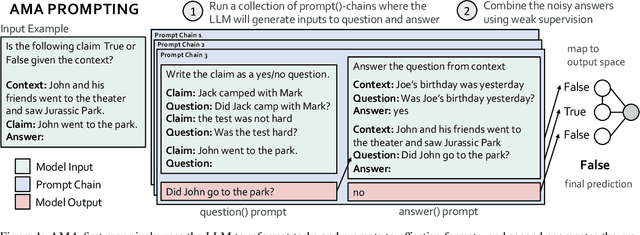
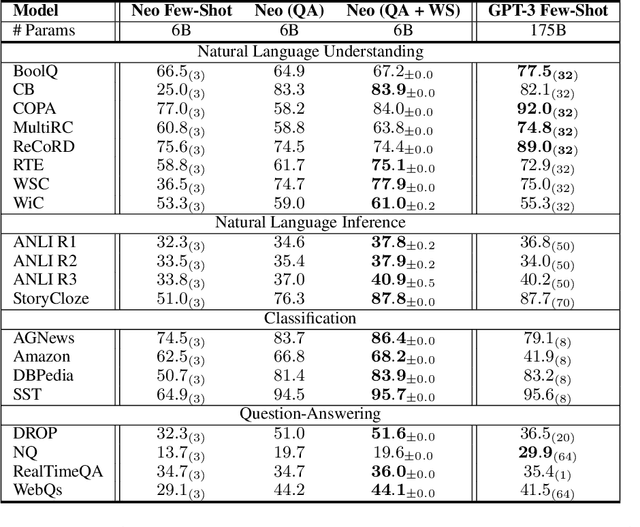


Abstract:Large language models (LLMs) transfer well to new tasks out-of-the-box simply given a natural language prompt that demonstrates how to perform the task and no additional training. Prompting is a brittle process wherein small modifications to the prompt can cause large variations in the model predictions, and therefore significant effort is dedicated towards designing a painstakingly "perfect prompt" for a task. To mitigate the high degree of effort involved in prompt-design, we instead ask whether producing multiple effective, yet imperfect, prompts and aggregating them can lead to a high quality prompting strategy. Our observations motivate our proposed prompting method, ASK ME ANYTHING (AMA). We first develop an understanding of the effective prompt formats, finding that question-answering (QA) prompts, which encourage open-ended generation ("Who went to the park?") tend to outperform those that restrict the model outputs ("John went to the park. Output True or False."). Our approach recursively uses the LLM itself to transform task inputs to the effective QA format. We apply the collected prompts to obtain several noisy votes for the input's true label. We find that the prompts can have very different accuracies and complex dependencies and thus propose to use weak supervision, a procedure for combining the noisy predictions, to produce the final predictions for the inputs. We evaluate AMA across open-source model families (e.g., EleutherAI, BLOOM, OPT, and T0) and model sizes (125M-175B parameters), demonstrating an average performance lift of 10.2% over the few-shot baseline. This simple strategy enables the open-source GPT-J-6B model to match and exceed the performance of few-shot GPT3-175B on 15 of 20 popular benchmarks. Averaged across these tasks, the GPT-Neo-6B model outperforms few-shot GPT3-175B. We release our code here: https://github.com/HazyResearch/ama_prompting
Can Foundation Models Wrangle Your Data?
May 20, 2022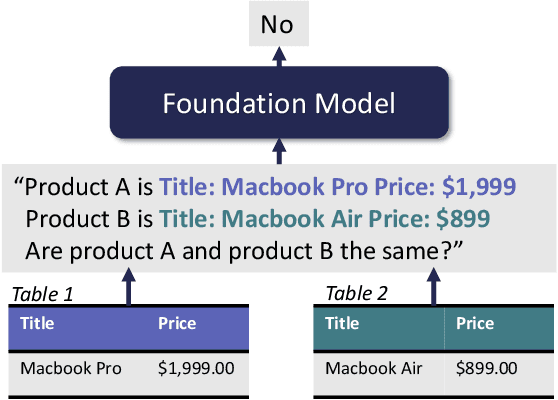
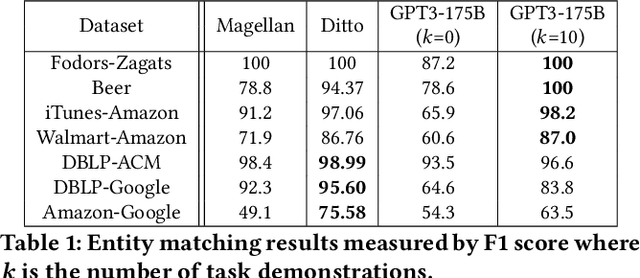
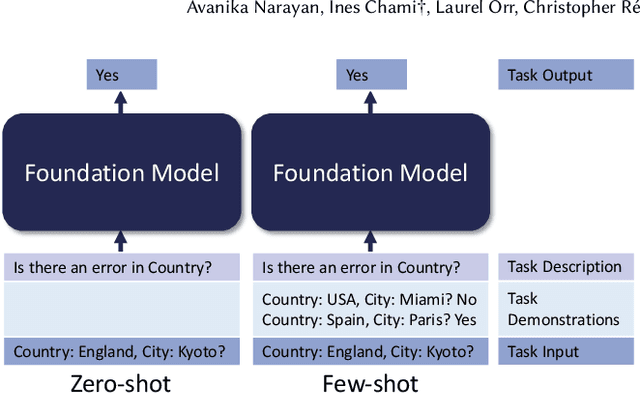
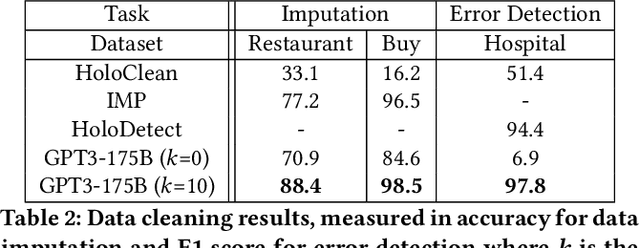
Abstract:Foundation Models (FMs) are models trained on large corpora of data that, at very large scale, can generalize to new tasks without any task-specific finetuning. As these models continue to grow in size, innovations continue to push the boundaries of what these models can do on language and image tasks. This paper aims to understand an underexplored area of FMs: classical data tasks like cleaning and integration. As a proof-of-concept, we cast three data cleaning and integration tasks as prompting tasks and evaluate the performance of FMs on these tasks. We find that large FMs generalize and achieve SoTA performance on data cleaning and integration tasks, even though they are not trained for these data tasks. We identify specific research challenges and opportunities that these models present, including challenges with private and temporal data, and opportunities to make data driven systems more accessible to non-experts. We make our code and experiments publicly available at: https://github.com/HazyResearch/fm_data_tasks.
HoroPCA: Hyperbolic Dimensionality Reduction via Horospherical Projections
Jun 07, 2021

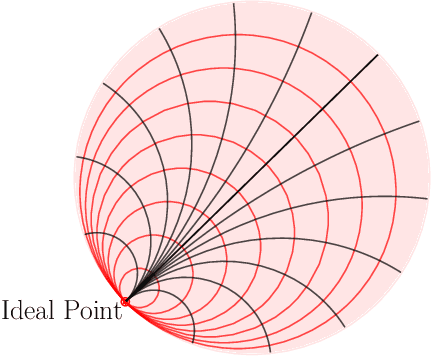

Abstract:This paper studies Principal Component Analysis (PCA) for data lying in hyperbolic spaces. Given directions, PCA relies on: (1) a parameterization of subspaces spanned by these directions, (2) a method of projection onto subspaces that preserves information in these directions, and (3) an objective to optimize, namely the variance explained by projections. We generalize each of these concepts to the hyperbolic space and propose HoroPCA, a method for hyperbolic dimensionality reduction. By focusing on the core problem of extracting principal directions, HoroPCA theoretically better preserves information in the original data such as distances, compared to previous generalizations of PCA. Empirically, we validate that HoroPCA outperforms existing dimensionality reduction methods, significantly reducing error in distance preservation. As a data whitening method, it improves downstream classification by up to 3.9% compared to methods that don't use whitening. Finally, we show that HoroPCA can be used to visualize hyperbolic data in two dimensions.
From Trees to Continuous Embeddings and Back: Hyperbolic Hierarchical Clustering
Oct 01, 2020


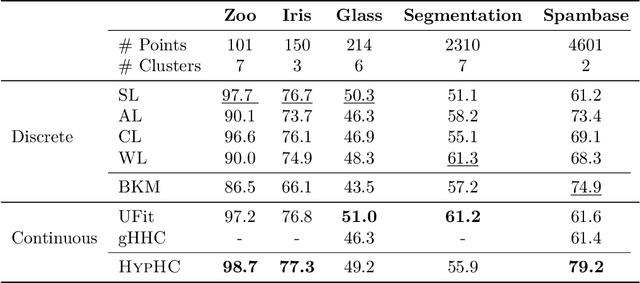
Abstract:Similarity-based Hierarchical Clustering (HC) is a classical unsupervised machine learning algorithm that has traditionally been solved with heuristic algorithms like Average-Linkage. Recently, Dasgupta reframed HC as a discrete optimization problem by introducing a global cost function measuring the quality of a given tree. In this work, we provide the first continuous relaxation of Dasgupta's discrete optimization problem with provable quality guarantees. The key idea of our method, HypHC, is showing a direct correspondence from discrete trees to continuous representations (via the hyperbolic embeddings of their leaf nodes) and back (via a decoding algorithm that maps leaf embeddings to a dendrogram), allowing us to search the space of discrete binary trees with continuous optimization. Building on analogies between trees and hyperbolic space, we derive a continuous analogue for the notion of lowest common ancestor, which leads to a continuous relaxation of Dasgupta's discrete objective. We can show that after decoding, the global minimizer of our continuous relaxation yields a discrete tree with a (1 + epsilon)-factor approximation for Dasgupta's optimal tree, where epsilon can be made arbitrarily small and controls optimization challenges. We experimentally evaluate HypHC on a variety of HC benchmarks and find that even approximate solutions found with gradient descent have superior clustering quality than agglomerative heuristics or other gradient based algorithms. Finally, we highlight the flexibility of HypHC using end-to-end training in a downstream classification task.
Machine Learning on Graphs: A Model and Comprehensive Taxonomy
May 07, 2020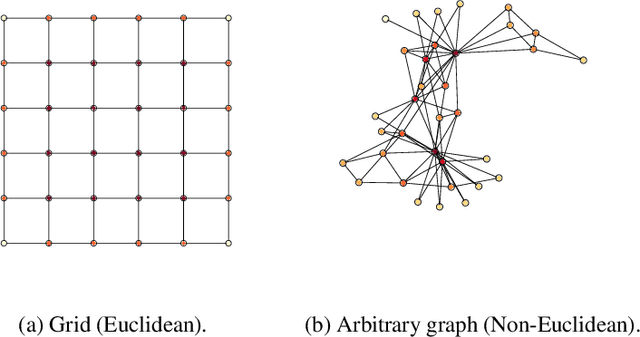



Abstract:There has been a surge of recent interest in learning representations for graph-structured data. Graph representation learning methods have generally fallen into three main categories, based on the availability of labeled data. The first, network embedding (such as shallow graph embedding or graph auto-encoders), focuses on learning unsupervised representations of relational structure. The second, graph regularized neural networks, leverages graphs to augment neural network losses with a regularization objective for semi-supervised learning. The third, graph neural networks, aims to learn differentiable functions over discrete topologies with arbitrary structure. However, despite the popularity of these areas there has been surprisingly little work on unifying the three paradigms. Here, we aim to bridge the gap between graph neural networks, network embedding and graph regularization models. We propose a comprehensive taxonomy of representation learning methods for graph-structured data, aiming to unify several disparate bodies of work. Specifically, we propose a Graph Encoder Decoder Model (GRAPHEDM), which generalizes popular algorithms for semi-supervised learning on graphs (e.g. GraphSage, Graph Convolutional Networks, Graph Attention Networks), and unsupervised learning of graph representations (e.g. DeepWalk, node2vec, etc) into a single consistent approach. To illustrate the generality of this approach, we fit over thirty existing methods into this framework. We believe that this unifying view both provides a solid foundation for understanding the intuition behind these methods, and enables future research in the area.
Low-Dimensional Hyperbolic Knowledge Graph Embeddings
May 01, 2020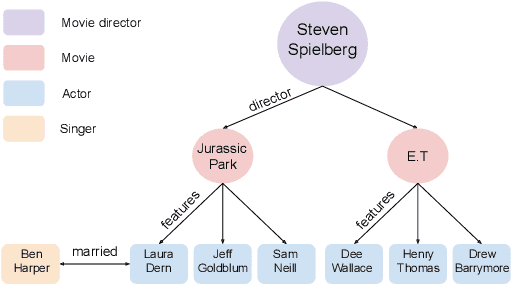

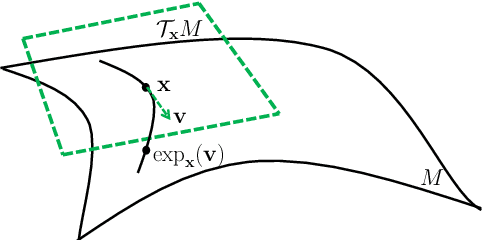

Abstract:Knowledge graph (KG) embeddings learn low-dimensional representations of entities and relations to predict missing facts. KGs often exhibit hierarchical and logical patterns which must be preserved in the embedding space. For hierarchical data, hyperbolic embedding methods have shown promise for high-fidelity and parsimonious representations. However, existing hyperbolic embedding methods do not account for the rich logical patterns in KGs. In this work, we introduce a class of hyperbolic KG embedding models that simultaneously capture hierarchical and logical patterns. Our approach combines hyperbolic reflections and rotations with attention to model complex relational patterns. Experimental results on standard KG benchmarks show that our method improves over previous Euclidean- and hyperbolic-based efforts by up to 6.1% in mean reciprocal rank (MRR) in low dimensions. Furthermore, we observe that different geometric transformations capture different types of relations while attention-based transformations generalize to multiple relations. In high dimensions, our approach yields new state-of-the-art MRRs of 49.6% on WN18RR and 57.7% on YAGO3-10.
Hyperbolic Graph Convolutional Neural Networks
Oct 28, 2019

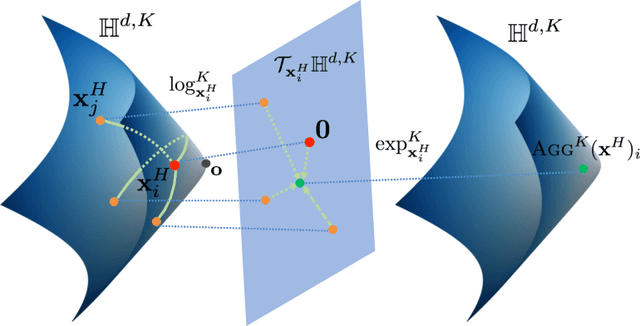
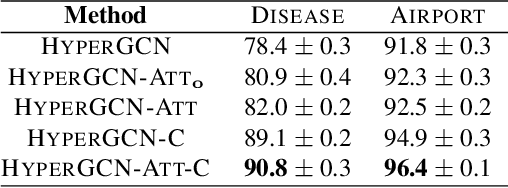
Abstract:Graph convolutional neural networks (GCNs) embed nodes in a graph into Euclidean space, which has been shown to incur a large distortion when embedding real-world graphs with scale-free or hierarchical structure. Hyperbolic geometry offers an exciting alternative, as it enables embeddings with much smaller distortion. However, extending GCNs to hyperbolic geometry presents several unique challenges because it is not clear how to define neural network operations, such as feature transformation and aggregation, in hyperbolic space. Furthermore, since input features are often Euclidean, it is unclear how to transform the features into hyperbolic embeddings with the right amount of curvature. Here we propose Hyperbolic Graph Convolutional Neural Network (HGCN), the first inductive hyperbolic GCN that leverages both the expressiveness of GCNs and hyperbolic geometry to learn inductive node representations for hierarchical and scale-free graphs. We derive GCN operations in the hyperboloid model of hyperbolic space and map Euclidean input features to embeddings in hyperbolic spaces with different trainable curvature at each layer. Experiments demonstrate that HGCN learns embeddings that preserve hierarchical structure, and leads to improved performance when compared to Euclidean analogs, even with very low dimensional embeddings: compared to state-of-the-art GCNs, HGCN achieves an error reduction of up to 63.1% in ROC AUC for link prediction and of up to 47.5% in F1 score for node classification, also improving state-of-the art on the Pubmed dataset.
Referring Relationships
Mar 29, 2018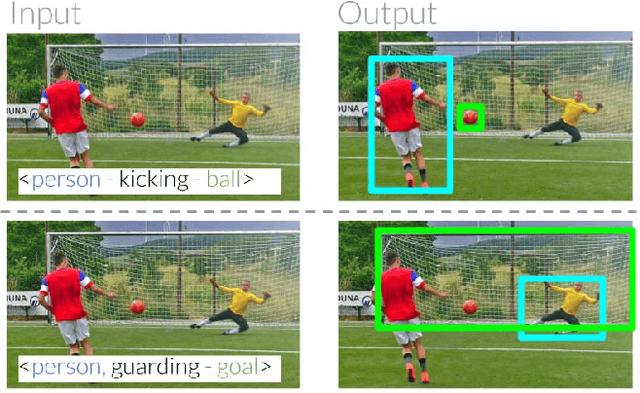


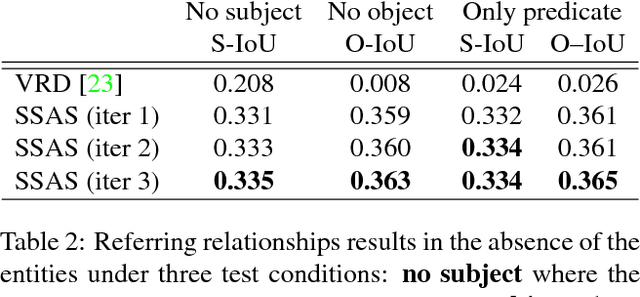
Abstract:Images are not simply sets of objects: each image represents a web of interconnected relationships. These relationships between entities carry semantic meaning and help a viewer differentiate between instances of an entity. For example, in an image of a soccer match, there may be multiple persons present, but each participates in different relationships: one is kicking the ball, and the other is guarding the goal. In this paper, we formulate the task of utilizing these "referring relationships" to disambiguate between entities of the same category. We introduce an iterative model that localizes the two entities in the referring relationship, conditioned on one another. We formulate the cyclic condition between the entities in a relationship by modelling predicates that connect the entities as shifts in attention from one entity to another. We demonstrate that our model can not only outperform existing approaches on three datasets --- CLEVR, VRD and Visual Genome --- but also that it produces visually meaningful predicate shifts, as an instance of interpretable neural networks. Finally, we show that by modelling predicates as attention shifts, we can even localize entities in the absence of their category, allowing our model to find completely unseen categories.
 Add to Chrome
Add to Chrome Add to Firefox
Add to Firefox Add to Edge
Add to Edge